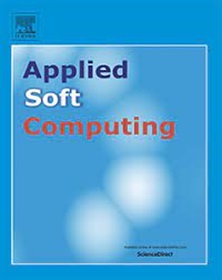不同水环境下多分支多尺度特征融合水下图像增强算法
IF 6.6
1区 计算机科学
Q1 COMPUTER SCIENCE, ARTIFICIAL INTELLIGENCE
引用次数: 0
摘要
近年来,水下图像增强技术因其在海洋勘探和环境保护中的重要作用而备受关注。与海洋环境的探索相比,高原和淡水环境湖泊的研究知之甚少。目前,所提出的水下图像数据集都是在来自海洋环境的成对数据集上进行训练和测试的,这些数据集过于简单,有些数据集甚至只包含原始的水下图像。因此,这些方法是否能有效地恢复高原和淡水环境数据集尚不清楚。为了解决这一问题,我们引入了一个包含2000对配对图像的高原和淡水环境数据集(P-HFUI),并提出了一种能够同时恢复海洋和高原和淡水环境的多分支多尺度特征融合水下图像增强算法(MM-DUIE)。同时,将本文提出的算法与目前最先进的算法进行了定性和定量的比较。结果表明,所提出的模型在峰值信噪比(PSNR)、结构相似指数测量(SSIM)、均方误差(MSE)和均方根误差(RMSE)方面均排名前三,更符合人眼的视觉要求。本文章由计算机程序翻译,如有差异,请以英文原文为准。
A multi-branch and multi-scale feature fusion underwater image enhancement algorithm for diverse water environments
In recent years, underwater image enhancement technology has attracted much attention due to its important role in ocean exploration and environmental protection. Compared with the exploration of the marine environment, the study of highland and freshwater-circumstance lakes is poorly understood. Currently, the proposed underwater image datasets are trained and tested on paired datasets from the marine environments, which are overly simplistic and some datasets even contain only the original underwater images. Therefore, it is unknown whether these methods can effectively restore highland and freshwater-circumstance datasets. To address this, we introduce a highland and freshwater-circumstance dataset (P-HFUI) with 2000 pairs of paired images and propose an underwater image enhancement method named Multi-Branch and Multi-scale Feature Fusion Underwater Image Enhancement Algorithm (MM-DUIE) that can restore both marine and highland and freshwater-circumstance. At the same time, we compare the proposed algorithm with the most advanced ones qualitatively and quantitatively. The results show that the proposed model ranks among the top three in terms of Peak Signal-to-Noise Ratio (PSNR), Structural Similarity Index Measurement (SSIM), Mean Squared Error (MSE) and Root Mean Square Error (RMSE), and is more in line with the visual requirements of human eyes.
求助全文
通过发布文献求助,成功后即可免费获取论文全文。
去求助
来源期刊

Applied Soft Computing
工程技术-计算机:跨学科应用
CiteScore
15.80
自引率
6.90%
发文量
874
审稿时长
10.9 months
期刊介绍:
Applied Soft Computing is an international journal promoting an integrated view of soft computing to solve real life problems.The focus is to publish the highest quality research in application and convergence of the areas of Fuzzy Logic, Neural Networks, Evolutionary Computing, Rough Sets and other similar techniques to address real world complexities.
Applied Soft Computing is a rolling publication: articles are published as soon as the editor-in-chief has accepted them. Therefore, the web site will continuously be updated with new articles and the publication time will be short.
 求助内容:
求助内容: 应助结果提醒方式:
应助结果提醒方式:


